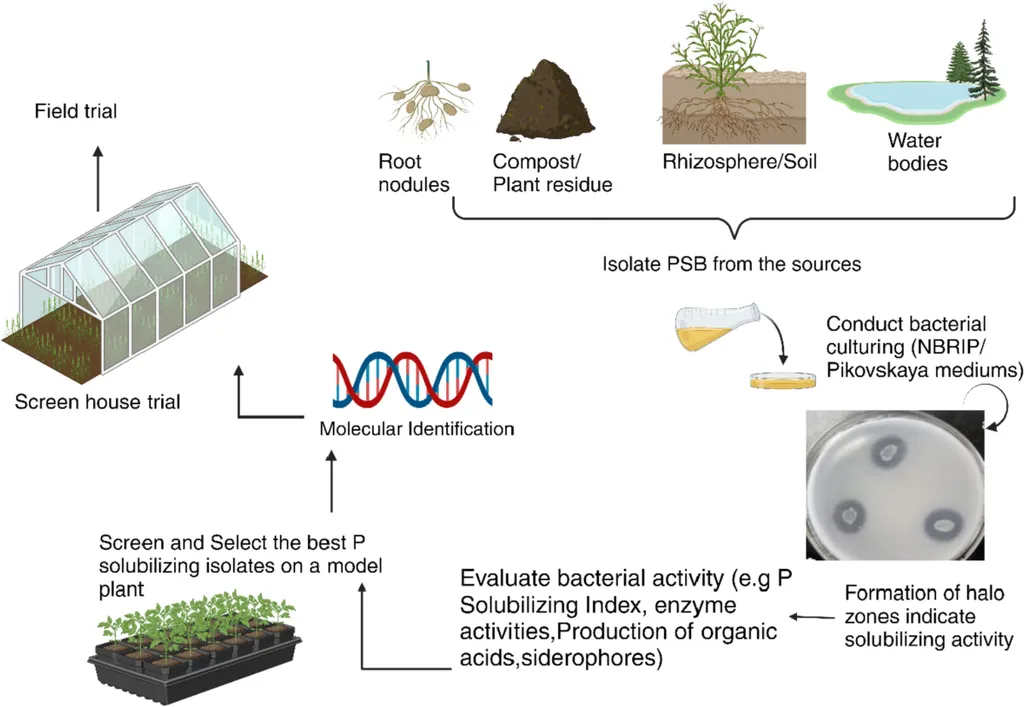In the hidden world beneath our feet, a complex conversation is unfolding. This dialogue, between soybean plants and the microscopic communities in the soil around their roots, could hold the key to more sustainable and productive agriculture. A recent review published in the journal *Frontiers in Plant Science* (translated from Chinese as “Plant Science Frontiers”) delves into these intricate interactions, shedding light on how environmental stresses and other factors influence the assembly and function of these microbial communities.
Sau-Shan Cheng, a researcher at the School of Life Sciences and Centre for Soybean Research of the State Key Laboratory of Agrobiotechnology at The Chinese University of Hong Kong, led the review. Cheng and her team explored how soybean plants communicate with and shape their rhizospheric microbiota—the community of microorganisms that inhabit the soil surrounding plant roots. This microbiota plays a crucial role in nutrient cycling, promoting plant health, and enhancing resistance to environmental stresses and pathogens.
“The rhizosphere is a dynamic ecosystem,” Cheng explains. “Understanding the communication strategies between plant roots and these microbial communities is vital for sustainable agriculture. These interactions can enhance crop resilience and productivity while reducing the need for chemical fertilizers.”
The review highlights that several factors influence these interactions, including soybean genetics, growth development stages, soil properties, agricultural practices, and environmental conditions. For instance, environmental stresses such as drought, salinity, or temperature fluctuations can significantly impact the assembly and function of the rhizospheric microbiota. This, in turn, affects soybean productivity and resilience.
One of the most intriguing aspects of this research is the role of secondary metabolites—chemical compounds produced by both the soybean plants and the microorganisms—in facilitating communication. These metabolites can act as signals, influencing the behavior of both the plants and the microbes. For example, certain metabolites produced by the plants can attract beneficial microbes, while others can deter harmful pathogens.
The commercial implications of this research are substantial. By understanding and harnessing these communication pathways, farmers and agronomists could develop more effective strategies for crop management. This could lead to increased yields, reduced reliance on chemical inputs, and improved sustainability in agriculture.
Moreover, the insights gained from this research could have broader implications for the energy sector. Soybeans are a crucial crop for biodiesel production, and enhancing their productivity and resilience could contribute to a more sustainable and secure energy future.
As Cheng notes, “This research opens up new avenues for exploring the complex interactions between plants and their microbial partners. By understanding these interactions, we can develop more effective strategies for enhancing crop productivity and sustainability.”
The review published in *Frontiers in Plant Science* provides a comprehensive overview of the current state of research in this field, highlighting the key factors that influence soybean-microbe interactions and the role of secondary metabolites in these processes. It also discusses the potential applications of this research for enhancing crop productivity and sustainability.
In the coming years, we can expect to see further advancements in this field, as researchers continue to unravel the complexities of plant-microbe interactions. This research could pave the way for innovative agricultural practices that are not only more productive but also more sustainable and resilient in the face of environmental challenges.

